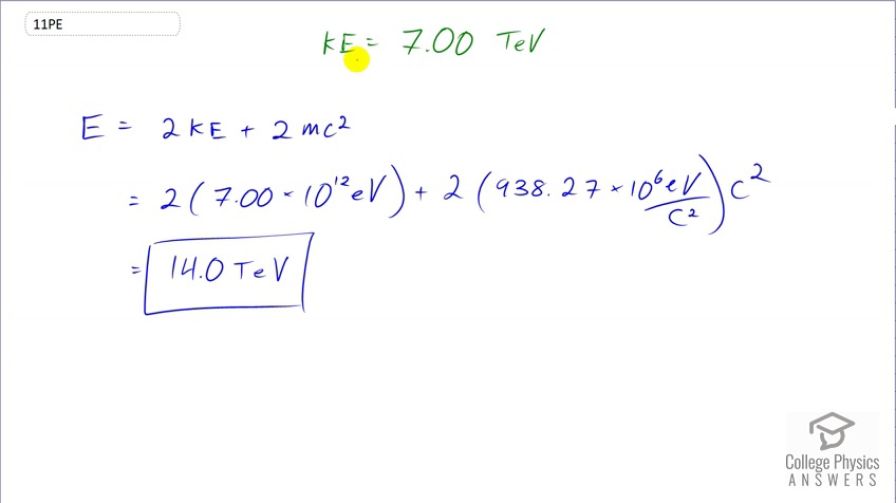Question
A proton and an antiproton collide head-on, with each having a kinetic energy of 7.00 TeV (such as in the LHC at CERN). How much collision energy is available, taking into account the annihilation of the two masses? (Note that this is not significantly greater than the extremely relativistic kinetic energy.)
Final Answer
Solution video
OpenStax College Physics for AP® Courses, Chapter 33, Problem 11 (Problems & Exercises)

vote with a rating of
votes with an average rating of
.
Calculator Screenshots
Video Transcript
This is College Physics Answers with Shaun Dychko. An electron and a positron collide head-on in the Large Hadron Collider at CERN in Switzerland and each one has a kinetic energy of 7 teraelectron volts and the question is how much total energy is released in the annihilation? So it's going to be the total kinetic energy of the two particles so that's two times the kinetic energy of each one and then add to that the mass energy of each one since they will be turning into energy once they annihilate. And so we have two times the mass of a proton or anti-proton times c squared. So 2 times 7 times 10 to the 12 electron volts plus 2 times 938.27 megaelectron volts per c squared— that's the mass of a proton or anti-proton— times c squared and this works out to 14.0 teraelectron volts. And what's interesting here is that the rest mass energy didn't really contribute anything to three significant figures to this total energy; it's mostly just this kinetic energy.
